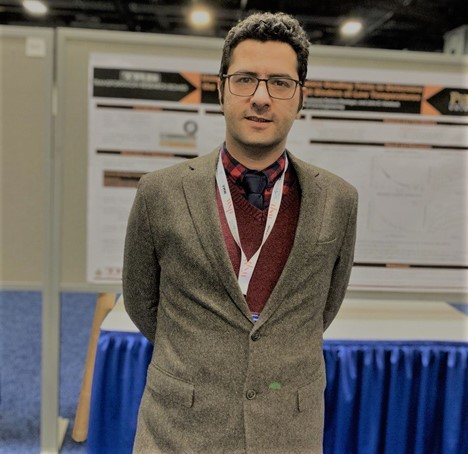
Ehsan Amini, a doctoral student in the UF Department of Civil & Coastal Engineering, was part of a collaborative project led by North Carolina State University (NCSU) that focused on identifying, documenting, and addressing some major deficiencies in the weaving methodology found in the Highway Capacity Manual 6 (HCM6).
The project “Assessing and Addressing Deficiencies in the HCM Weaving Segment Analyses (Project K2),” was funded by the Southeastern Transportation Research, Innovation, and Development (STRIDE) Center, which is the 2016 grant-funded U.S. Department of Transportation (USDOT) Region 4 (Southeast) University Transportation Center (UFTI) housed at the UFTI.
The HCM is one of the most commonly used references for planning and operational analysis in transportation engineering. It includes methods for evaluating simple freeway segments, weaving segments, merge and diverge segments, freeway facilities, and the evaluation of freeway time travel reliability. Practitioners have found that the existing weaving analysis is unable to model or show sensitivity to important parameters under certain operating conditions.
As an example of some these deficiencies, the non-weaving vehicles’ speeds are not sensitive to the short length of the weaving section (the distance between two gore points in the weaving segment). Also, the non-weaving speed is not sensitive to all lane changes within the segment. These issues have led practitioners to question the soundness of the HCM6 weave segment analysis and raised concerns with facility-wide or travel time reliability analyses when incorporating weaving segment analyses.

Amini conducted an extensive literature review to gather and document the various issues cited or reported by practitioners in the HCM6. He also was responsible for testing, reviewing, and evaluating the HCM6 weaving analysis method for multiple scenarios to pinpoint inconsistencies and problems related to the reported lack of sensitivity in, for example, the effects of short length and lane change rates. He gathered field data from video recordings and loop detectors of 15 nationwide weaving sections. The database also incorporated data previously gathered from the NCHRP 3-75 project. With the new framework and models created by the NCSU research team, Amini’s database was used to tweak and modify the weaving analysis method.
Amini’s work contributed to the development of a new model, and showed that the current HCM6 model tends to underestimate the speed within the weaving section compared to the field data collected. The new model was also able to show better predictability for speed and capacity for ramp weaves when sensitivity tests were conducted on weaving length, weaving movement flow rates, and overall traffic flows, thus underscoring the issue within the existing HCM6.
“As the traffic increases, the HCM6 predicts a higher capacity for the weaving section,” Amini said. “It should be noted that weaving demands can change the capacity of weaving sections. However, in the HCM6, the capacity of the weaving section increases as the overall demand increases.”
He said that the reason for this is that in the weaving section’s capacity formula, HCM6 uses the VR parameter in the negative side of the capacity equation, and when the weaving movements are fixed, by increasing the non-weaving movements, the value of VR is decreased and as a result, the predicted capacity increases.

The NCSU and UF research team are proposing that the new model should be included in the next version of the HCM. By doing so, practitioners will be able to more accurately conduct a facility-wide or travel time reliability analyses, which greatly depend on weaving segment analyses.
STRIDE Project K2 was recently completed and is currently in the peer-review process. A webinar on this project was hosted on October 12th, and a recording will be posted on the STRIDE Center’s Webinars page.